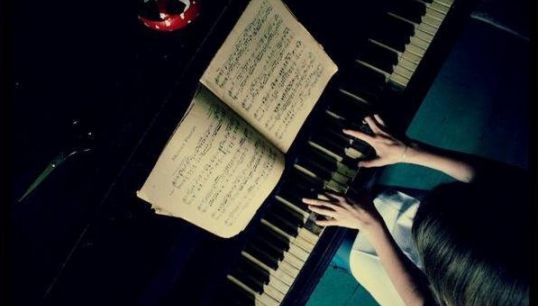You will need
- Inspiration is desirable;
- Electronic musical instrument with the input Jack;
- Cable outputs with "Jack" and "minijack" (if the outputs of only one type, the corresponding connectors);
- The computer with installed sound ...
- Speakers or headphones;
- Poems are going to write music;
- A piece of paper and pen (or tape recorder);
- The basics of musical knowledge and ear for music.
Instruction
1
If there is inspiration, call it. It's not difficult.
The text is, so just read it aloud, playing instrument chords in random order in different keys. Experiment with the size and rhythm.
If you usually compose for a keyed instrument, grasp the guitar, improvise on it. Conversely, if you compose on the guitar, sit behind the keys. Try even to compose verse at the piano, and the chorus - the guitar. All the ideas on paper or a voice recorder.
Listen to your favorite song, analyze its elements: melody, rhythm, harmony, more. Determine what it is you like.
Think about what feelings the song will cause listeners. Emotional will tell you where to begin the song.
The text is, so just read it aloud, playing instrument chords in random order in different keys. Experiment with the size and rhythm.
If you usually compose for a keyed instrument, grasp the guitar, improvise on it. Conversely, if you compose on the guitar, sit behind the keys. Try even to compose verse at the piano, and the chorus - the guitar. All the ideas on paper or a voice recorder.
Listen to your favorite song, analyze its elements: melody, rhythm, harmony, more. Determine what it is you like.
Think about what feelings the song will cause listeners. Emotional will tell you where to begin the song.
2
Think of the Intro. This should be a short fragment based on a certain rhythm, melodic or timbral (instrumental) paint. Often, the entry becomes a "calling card" song, it will all work. Make it vivid and short.
3
After a few improvisations, You will have a melody. It will be the core of the songs, the theme of the solo (verse). Continue to improvise, you now need to compose the theme of the chorus.
4
Topics vary from verse to verse. Do not get carried away, but can you at least change the tone (raise of a semitone or tone), add some broken gear or something else.
5
Proceed with the arrangement. Sign bass to the melody. Change it not more than two quarters and not less than two to four bars. Too fast a change will not be heard, and too long stop will be to bore the audience.
6
Bass, too, can change. In the second or third verse raise or lower it in some places a third, but if the melody has changed a lot, the bass is not much touch.
7
Now get rhythm and harmony. They are so interlinked that sometimes are called in one word – removemenu. This chord, paint music, the substrate between the bass and melody.
Follow the frequency of pulsation of harmony. It should match the character of the song. With measured melody can be a frequent pulse, and melodies with complex rhythm can be slow pulse. The main thing – to justify, to prove that it's necessary.
Follow the frequency of pulsation of harmony. It should match the character of the song. With measured melody can be a frequent pulse, and melodies with complex rhythm can be slow pulse. The main thing – to justify, to prove that it's necessary.
8
Compose toady. It can be just below the melody or a little higher. Sounds like a rule, in the pauses after the main melody, and, in addition, for the most part, in the pauses. Give it a tone that is different from the main melody and the volume slightly lower.
9
Errors in composition – this is not an error, and a violation of the law. A violation of the law in art is not a violation, and the search for a new. Therefore be mistaken. Mistakes will lead you to interesting passages in the melody, rhythm, harmony and other elements.
10
This is the most basic method works, it takes into account not all of the items that are allowed in the composition. Keep experimenting, looking for new forms. So developed his individual style and creative style.

